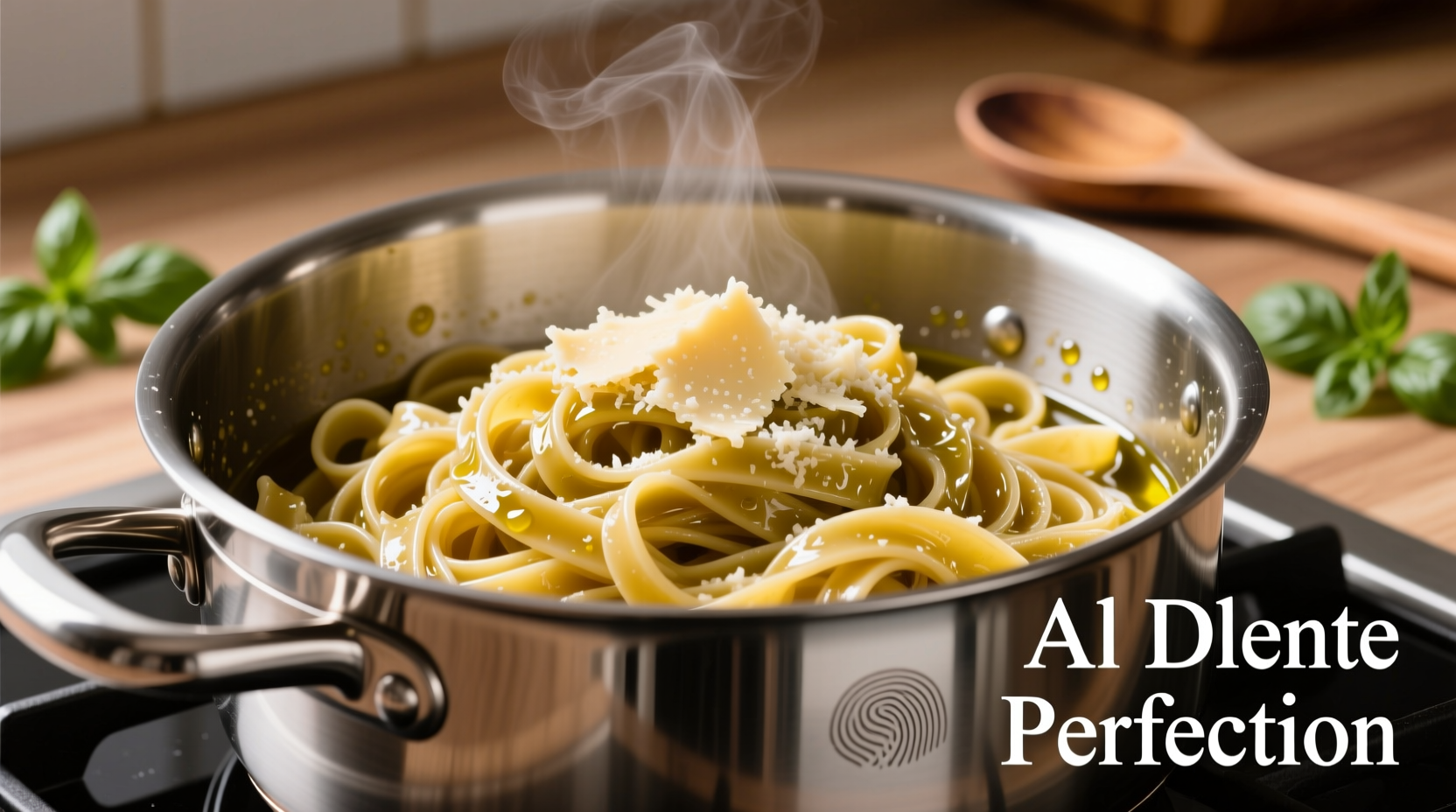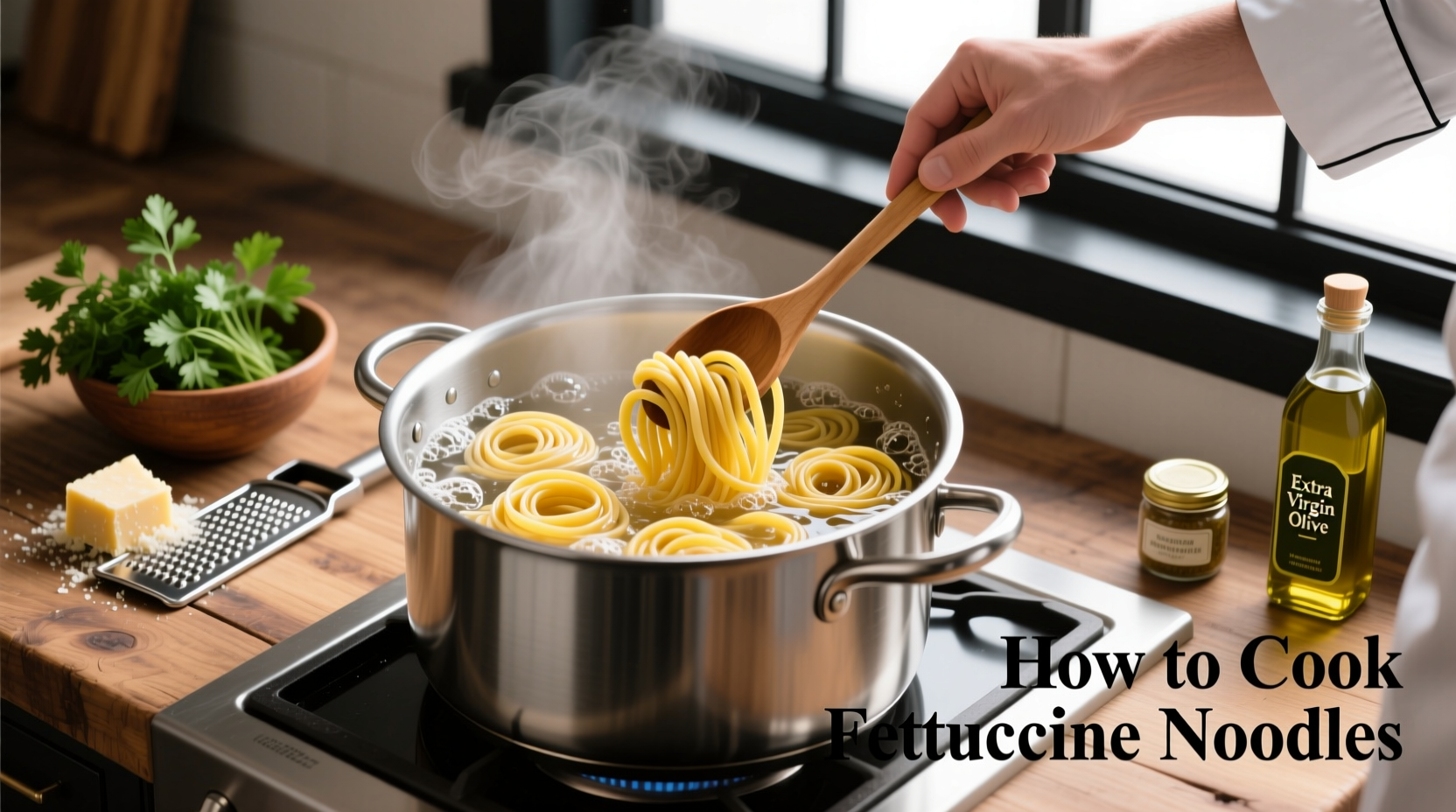Essential Tools and Ingredients for Perfect Fettuccine
Before you begin cooking fettuccine, gather these essentials. Professional chefs emphasize that proper equipment significantly impacts results. You'll need:
- A large 6-8 quart pot (critical for proper water-to-pasta ratio)
- Wooden spoon or pasta fork
- Colander for draining
- Measuring cups and spoons
- Timer (don't rely on visual cues alone)
For ingredients, select high-quality dried fettuccine made from durum wheat semolina. The USDA Agricultural Research Service confirms that durum wheat provides optimal protein structure for pasta that maintains integrity during cooking. Avoid "instant" or pre-cooked varieties if you want authentic texture.

The Science-Backed Cooking Process
Understanding the chemistry behind pasta cooking transforms your results. As pasta enters boiling water, two critical processes occur simultaneously:
| Process Stage | Temperature Range | Chemical Reaction | Visual Indicator |
|---|---|---|---|
| Initial Hydration | 160-180°F (71-82°C) | Starch granules absorb water | Pasta becomes flexible |
| Gelatinization | 180-212°F (82-100°C) | Starch swells and thickens water | Water becomes cloudy |
| Protein Setting | 190-212°F (88-100°C) | Gluten network stabilizes | Pasta holds shape firmly |
Step-by-Step Fettuccine Cooking Method
Follow these precise steps for restaurant-quality fettuccine at home. This method incorporates professional chef techniques that address common home cooking mistakes.
Water Preparation: The Critical Foundation
Fill your largest pot with 4-6 quarts of cold water per pound of fettuccine. This specific ratio prevents starch concentration from becoming too high, which causes pasta to become gummy. Add 1-2 tablespoons of coarse sea salt per gallon of water after the water reaches a rolling boil. Contrary to popular belief, salt doesn't significantly raise the boiling point but does enhance flavor absorption.
Adding and Cooking the Pasta
Gently add fettuccine to the boiling water, stirring immediately to prevent sticking. Set your timer for 8 minutes (check package instructions as some brands require 10-12 minutes). During cooking:
- Maintain a vigorous but not violent boil
- Stir occasionally, especially during the first 2 minutes
- Reserve 1 cup of starchy pasta water before draining
Testing for Perfect Doneness
Two minutes before the package-suggested time, begin testing for al dente. Remove a strand, cool slightly, and bite. Perfect fettuccine should have a slight resistance in the center but not be hard. The US Food Safety and Inspection Service recommends cooking pasta until it reaches an internal temperature of 180-190°F (82-88°C) for optimal texture and safety.
Common Fettuccine Cooking Mistakes and Solutions
Even experienced cooks make these critical errors. Understanding why they happen helps prevent them:
The Oil Myth
Adding oil to pasta water is unnecessary and counterproductive. The American Culinary Federation explains that oil prevents sauce from adhering to pasta by creating a barrier on the surface. Instead of oil, use sufficient water and stir occasionally during the initial cooking phase.
Overcrowding the Pot
Adding too much pasta at once drops the water temperature significantly, leading to uneven cooking and mushy results. Cook in batches if necessary, especially when preparing large quantities. Professional kitchens maintain strict water-to-pasta ratios to ensure consistent results.
Discarding All Pasta Water
That cloudy water contains valuable starch that helps sauces emulsify and cling to pasta. Always reserve at least 1 cup before draining. This professional technique creates restaurant-quality sauce integration that home cooks often miss.
Serving and Sauce Integration Techniques
How you finish your fettuccine determines the final dish quality. Follow these chef-recommended practices:
- Never rinse cooked pasta (removes essential starch)
- Transfer pasta directly from pot to sauce pan
- Add reserved pasta water gradually to achieve perfect consistency
- Toss vigorously over low heat for 1-2 minutes to coat evenly
For classic fettuccine Alfredo, add the sauce while pasta is still slightly undercooked, allowing the residual heat to finish cooking while absorbing flavors. This technique prevents overcooking while maximizing flavor integration.
Troubleshooting Guide for Fettuccine Problems
Even with careful preparation, issues can arise. Here's how to fix common problems:
Undercooked Fettuccine
If your pasta is too firm, return it to the pot with ½ cup of reserved pasta water and simmer for 1-2 minutes. The starch in the water helps cook the pasta evenly without becoming waterlogged.
Overcooked Fettuccine
Rescue mushy pasta by immediately shocking it in ice water, then finishing in your sauce over high heat. The cold water stops the cooking process while the sauce heat revives texture. This technique works best with thicker sauces that can recoat the pasta.
Sticky or Clumped Pasta
Prevent sticking by ensuring vigorous boiling and stirring during the first two minutes. If pasta sticks after draining, toss with a small amount of olive oil or immediately combine with sauce. Never leave cooked pasta sitting in the colander.
Storage and Reheating Best Practices
Proper storage maintains texture for leftovers. Cool fettuccine quickly by spreading on a baking sheet, then store in an airtight container with a light coating of olive oil. The FDA Food Code recommends refrigerating cooked pasta within 2 hours for food safety.
When reheating, avoid the microwave which creates uneven texture. Instead, drop pasta into boiling salted water for 30-60 seconds, or toss with hot sauce in a skillet. This preserves the al dente texture far better than other methods.
Frequently Asked Questions
Here are answers to the most common fettuccine cooking questions based on professional chef recommendations and food science principles.











 浙公网安备
33010002000092号
浙公网安备
33010002000092号 浙B2-20120091-4
浙B2-20120091-4